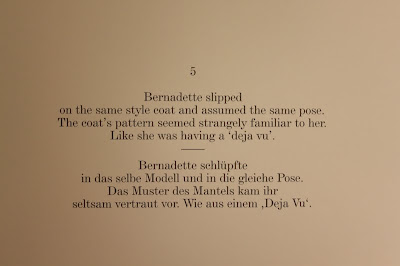first published by a virtual biennale, line magazine
www.avirtualbiennale.tumblr.com
Wolfgang Joop is infamous as the German designer who founded the fashion and cosmetics company JOOP! In the context of the 54th Venice Biennale, he presents Eternal Love - an overview of his recent sculptural and textile works.
Presenting a multitude of marble monkeys and screaming angels, Joop addresses our human existence through his juxtaposition of the eternal and the temporal, the divine and the earthly. Utilising his mastery of the aesthetic, Joop grasps his viewer’s attention with kitsch imagery, and gleaming surfaces. In Eternal Love, Joop conceives of an idealised world that is clearly flawed, but one which opposes his fast-paced fashion world, which he claims as ‘amoral’ and ‘not used to provoke deep thought.’
The work presented is essentially beautiful, classically informed and ethereal. However, this initial aestheticism is deceptive, obscuring an enigmatic series of works which address the duality of life and death, and the various manifestations of love. One exhibition room displays a sequence of drawings which depict the story of a fashion crazed monkey who falls in love with a human designer from Paris, for whom she subsequently breaks off her engagement to a male monkey, despite the fact her love is unrequited. For Joop, the monkey embodies pure, natural love - an antithesis to our humanistic, cognitive experiences. Joop’s idiosyncratic presentation of the human and the animal is a consistent thread throughout the exhibition - it is a well-known collocation, but Joop provides a slight twist of irritation; a mockery that evades over simplification.
The ultimate difficulty with Eternal Love lies with Joop’s relationship to his precedents. It is inevitable that his artistic oeuvre will be compared to his career as a fashion designer, with all its implications. There is clearly an ingrained love of pure aestheticism within the artist/designer, which becomes dangerous when attempting to present artistic dialogue alongside artistic beauty. One can assume Joop’s use of kitsch is a purposeful tool rather than a simple stylistic choice, as, juxtaposed with brutal animalistic imagery, it clearly seeks to emphasise his interest in ‘the duality of life.’ However, one must attempt to distinguish whether the work truly manages to say anything over and above this duality, or whether it ultimately recedes into its own beauty. That is to say, whether it seeks to establish anything more than Joop’s own words: ‘cherry blossoms are very fleeting, while skulls can last thousands of years.’










No comments:
Post a Comment